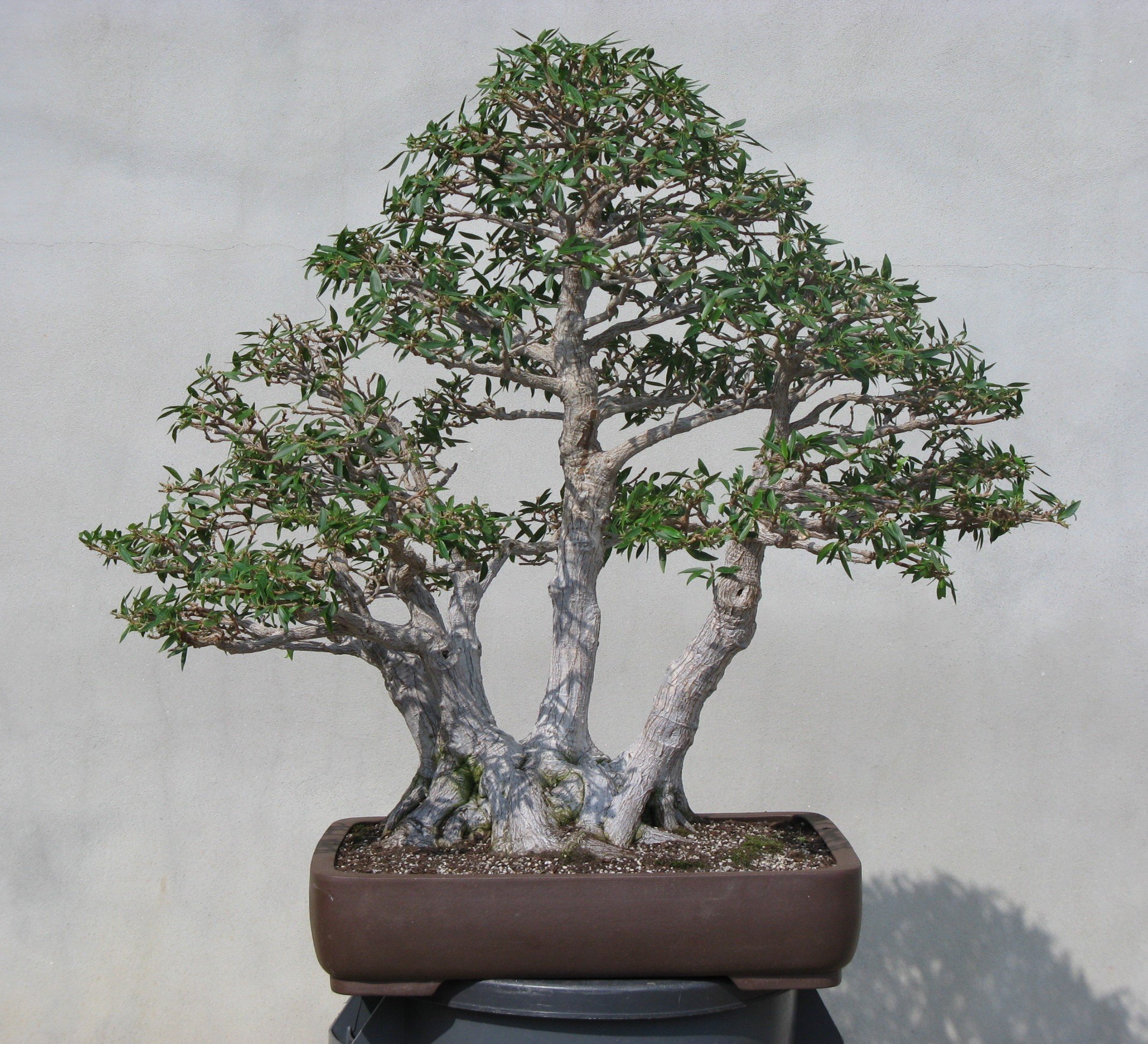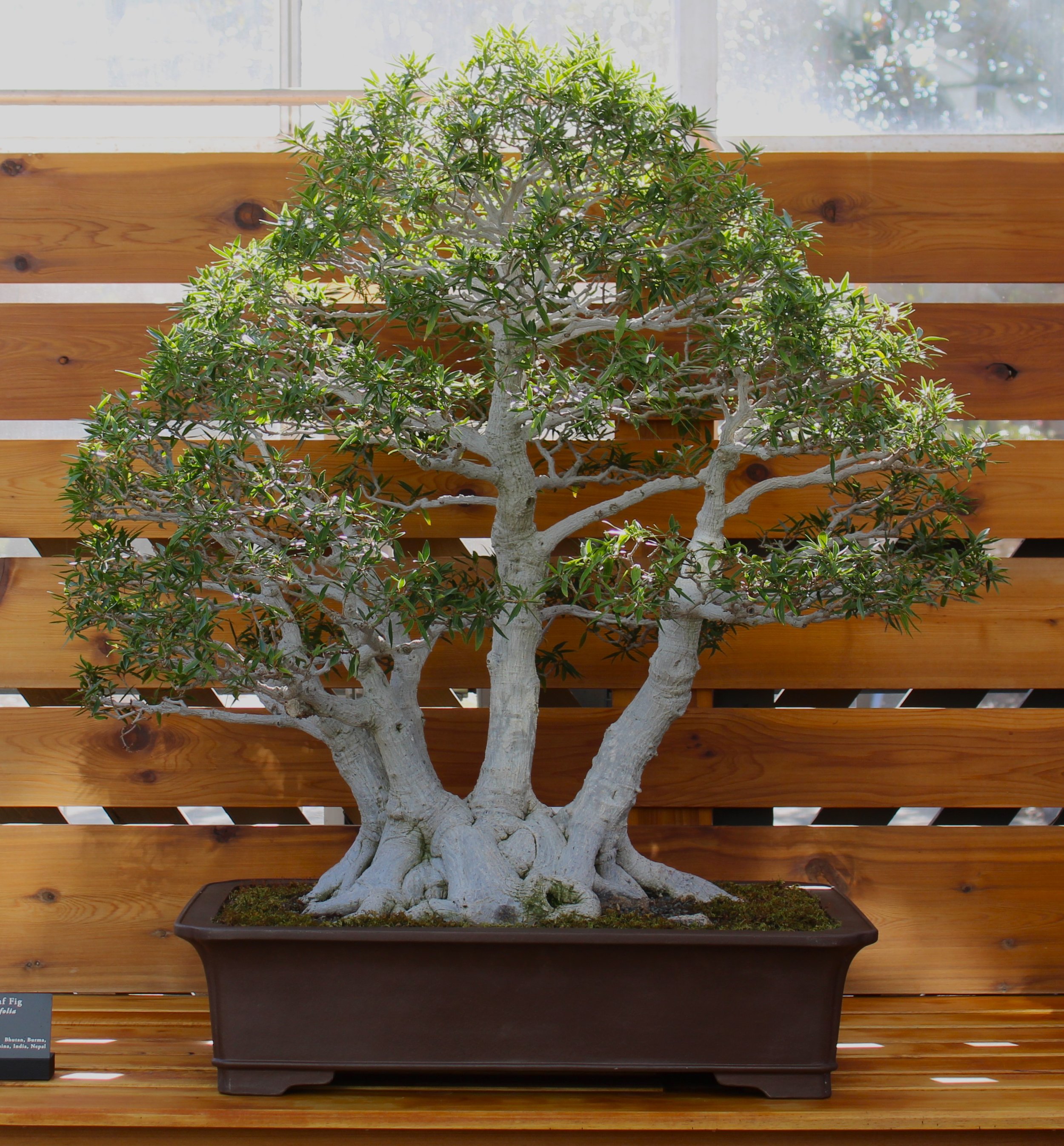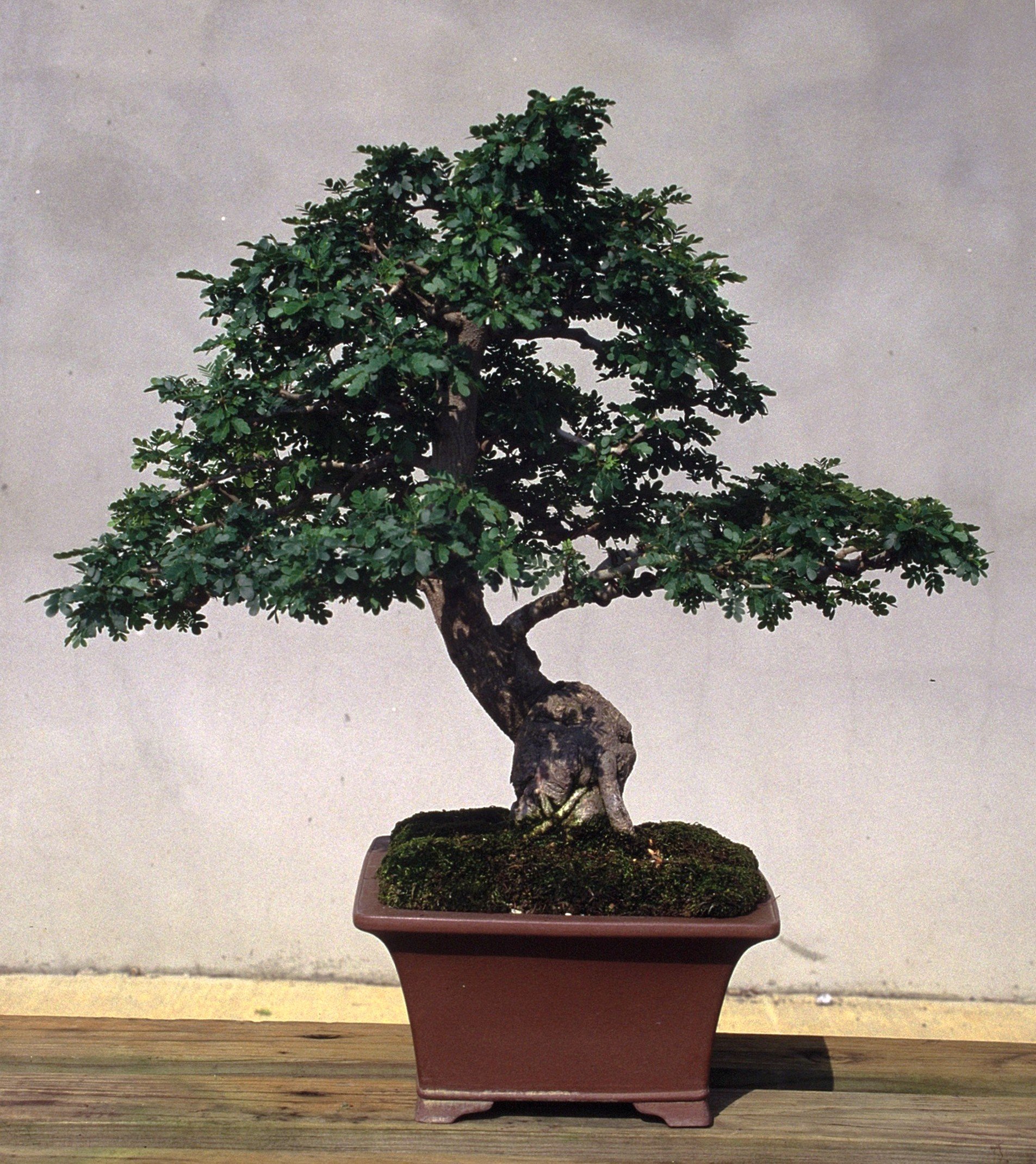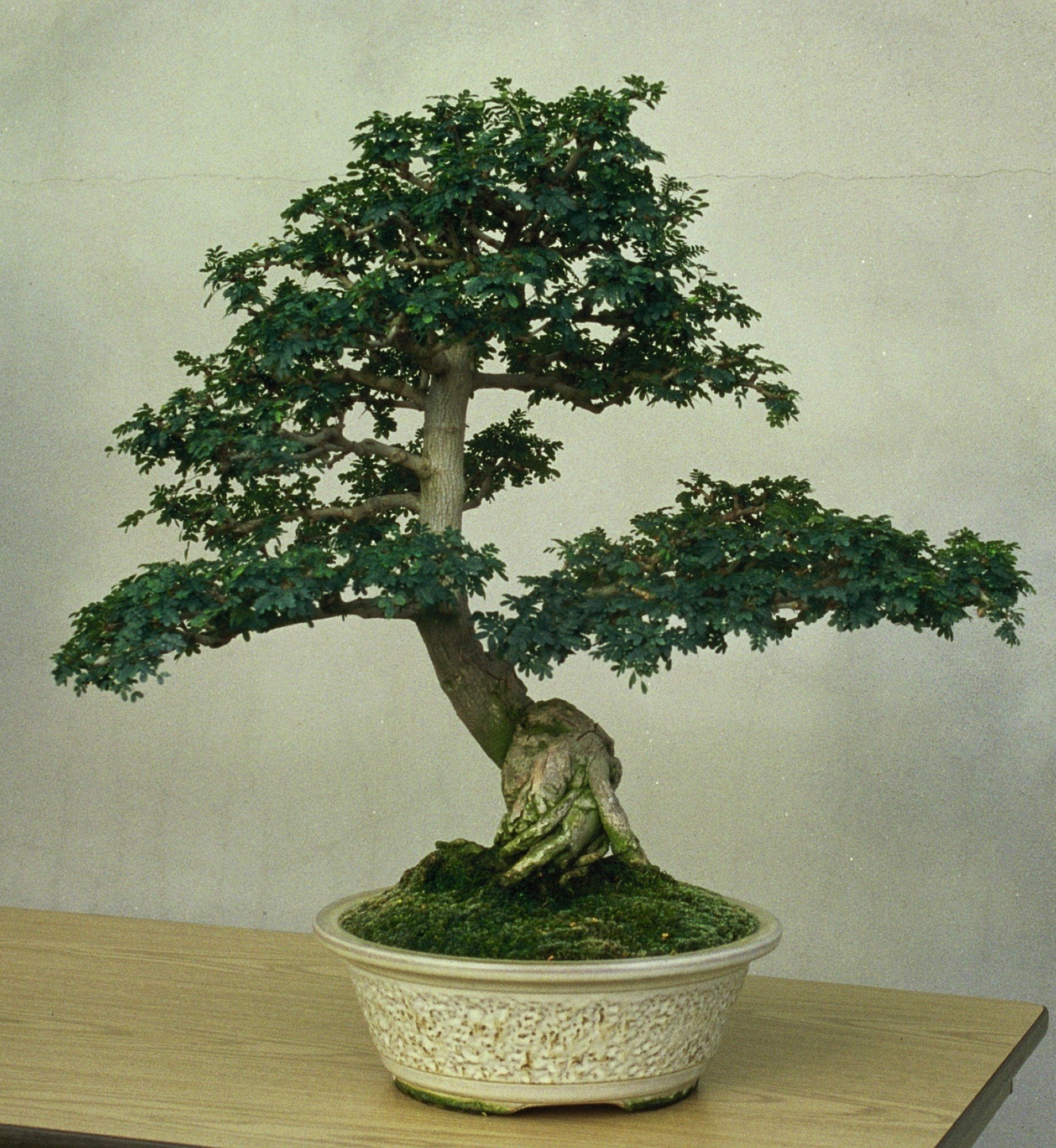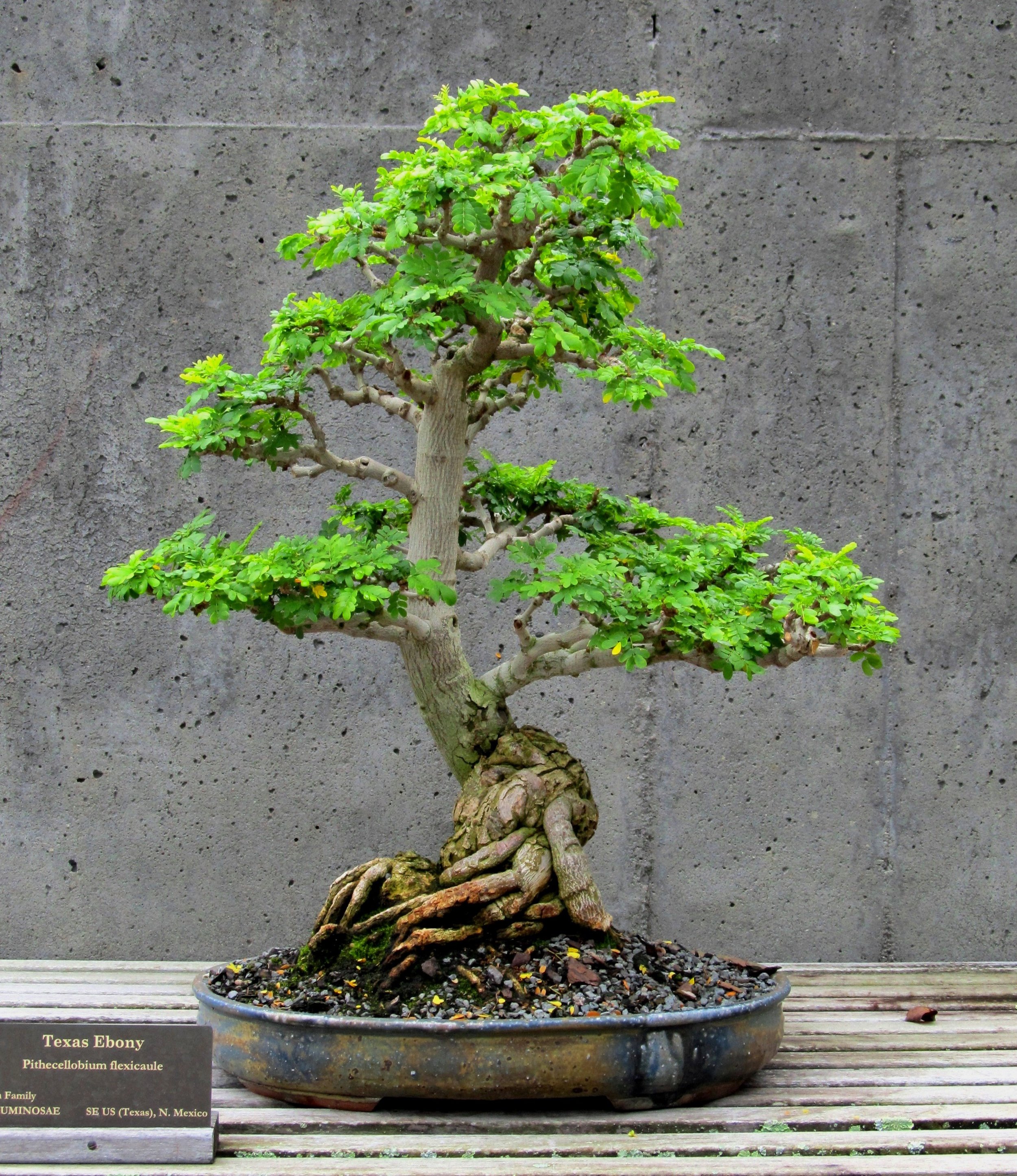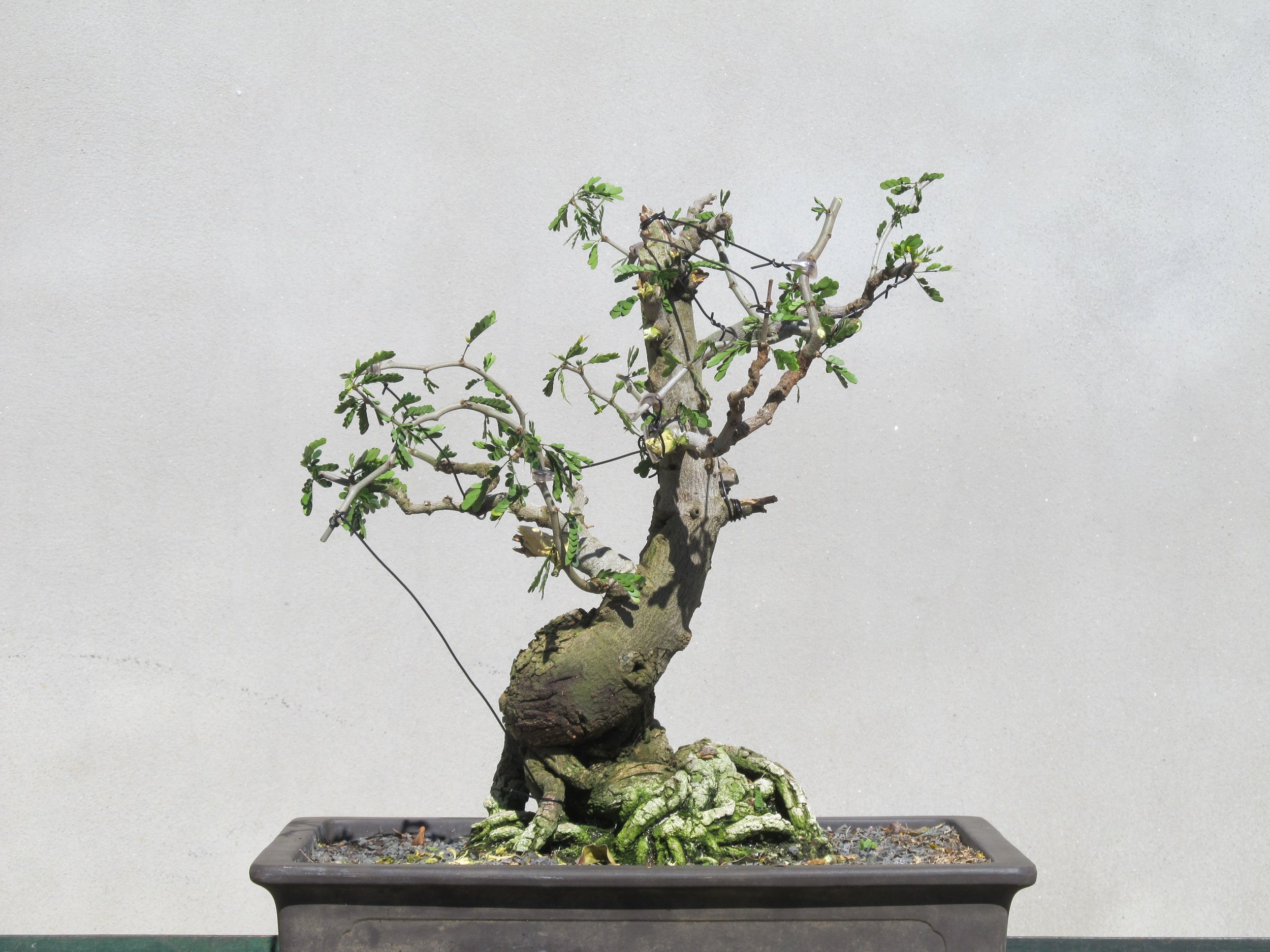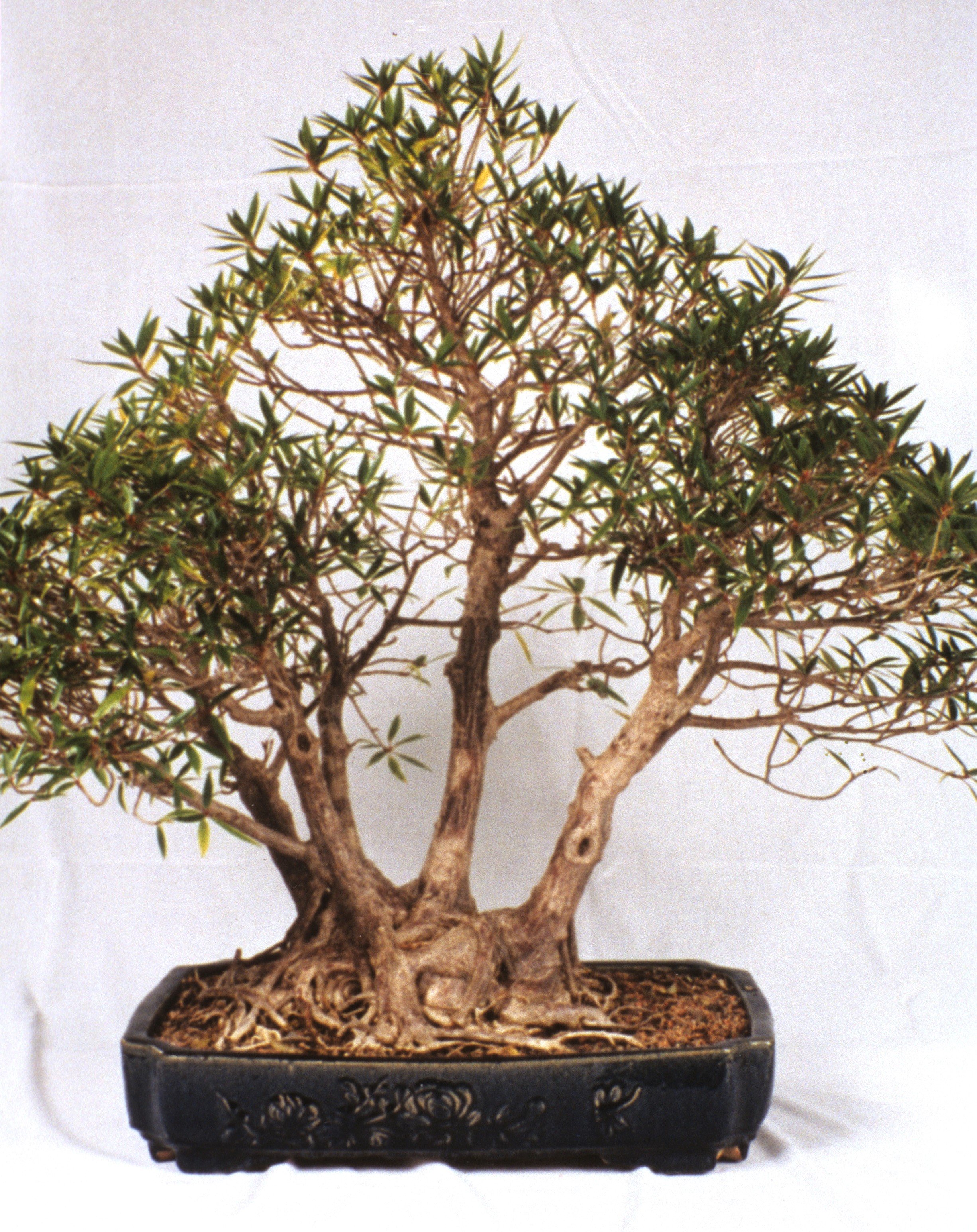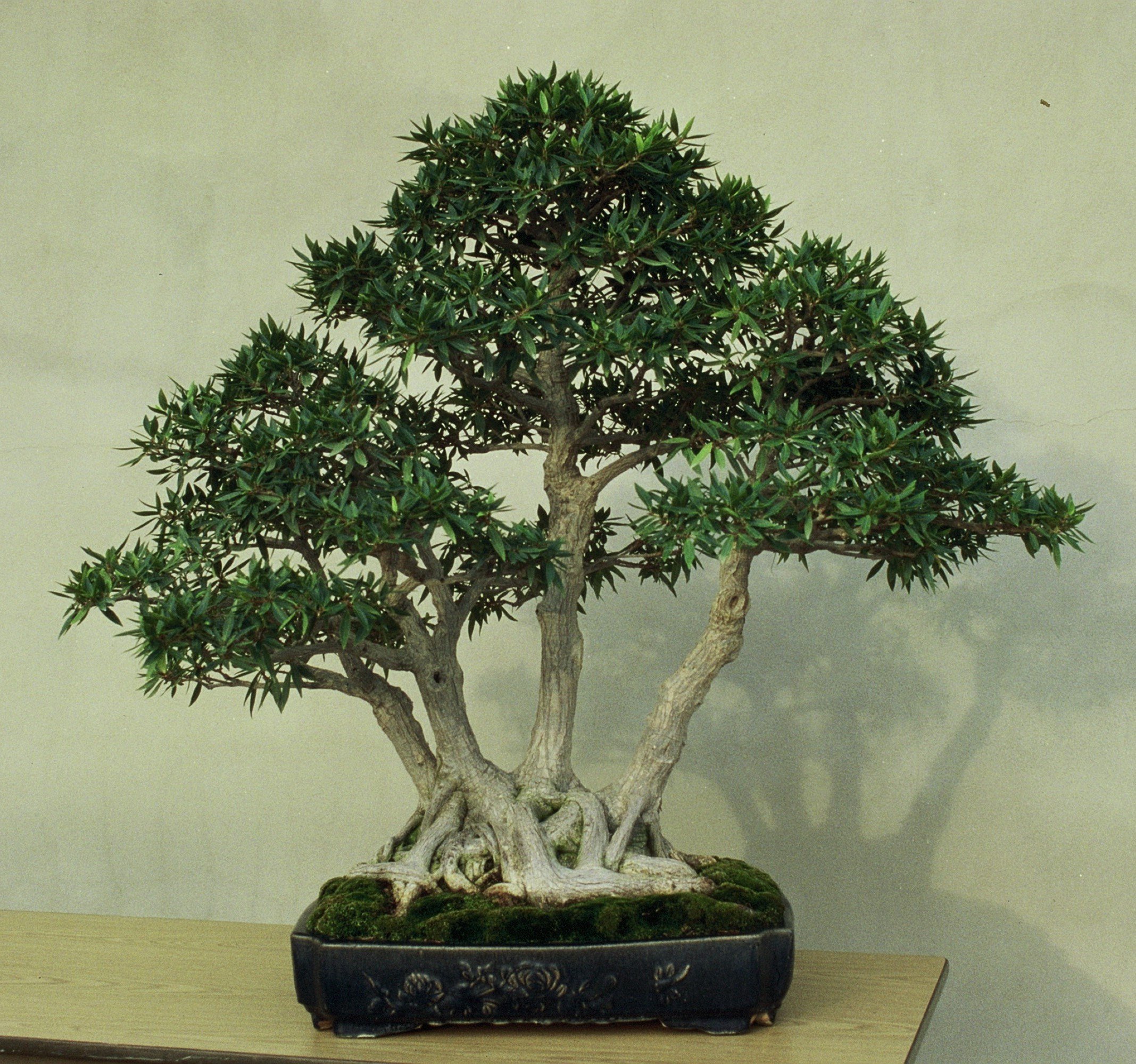Time For Tropicals
Somehow in my mind the tropical portion of our bonsai collection has always been secondary to the temperate part. The tropical trees are far fewer, numbering only twenty-one in total.* That might account for a bias in favor of the temperate trees, owing to the fact that they comprise the bulk of our collection. But that same dynamic might just as well have resulted in favor being shown the tropicals due to their relative rarity. It may be that living in a temperate climate as we do makes the tropical plants less familiar. There is a foreign aspect to them, an awareness that they don't belong here because they can't live outside in winter. You can't simply plant a tropical species in the ground here and let it fend for itself. There is an appeal in exoticism, but not everyone feels its pull so strongly.
(*Note: Some of the specimens counted among our tropical holdings are actually sub-tropical in nature, but they are lumped in with the true tropical species because they all require protection in winter.)
Whatever the reason might be for any lack of enthusiastic appreciation, the tropical portion of our bonsai collection deserves its time in the sun. Those little trees earn their keep at this time of year by providing a leafy green bonsai presence in the Baker greenhouse from December until the middle of May. People appreciate seeing the tropical bonsai looking so vibrantly alive while the temperate world outside, wrapped up in the somber cloak of dormancy, settles into the relative dullness of cold winter. We have some good tropical specimens, too — nothing to be shy about showing. And we've had them a long time. Most of the tropicals were part of the original donation from the Staples family back in 1992, so they've been at home here for more than thirty years. Such is the case with the two trees featured today.
Willow-leaf Fig (Ficus neriifolia)
In the original 1992 donation, of the tropical bonsai there were more Ficus than any other genus, with willow-leaf fig being the most common species among them. The largest of the willow-leafs was a grouping of five:
These were plants that had apparently been growing as separate individuals and then were all massed together, roots mashed up between them. This sort of clump planting can work well with ficus generally. Over time the roots all meld together and form one massive base, but it takes many years for this to happen. The large, five-trunk clump willow-leaf fig we were given had been growing together for a while as evidenced by some self-grafting taking place among the roots. It still had a long way to go, however, and the base of the tree as it was looked like an intimate gathering of tentacled creatures. In the crowns of the trees the branching was overgrown and unkempt. This specimen was impressive for its size, but it was rank and ungainly and it needed a lot of work.
The following image shows the willow-leaf group at the very beginning of 1995:
One of the distinct advantages of working with an out-of-shape tropical bonsai is that with good care they are capable of regaining vitality so quickly. That is, their recovery time is less when compared to undertaking the same process on a temperate species. Tropical bonsai that have the benefit of a quality greenhouse for the winter months can enjoy nearly year-round growth, as illustrated by how well this willow-leaf group cleaned up in just two years. It was one of the earliest trees I learned to work on under the guidance of Don Torppa, and I could see the improvement happening.
In January of 1995, as part of my study with Yuji Yoshimura, I brought with me photographs of the bonsai in the Arboretum's collection so that he could give me specific advice about each tree. The previous photograph was used for that purpose. Based on what he saw in the picture, Mr. Yoshimura recommended removing the lowest branch on one side of the arrangement or the other, in order to create more asymmetry in the silhouette shape of the crown. He also advised cutting away sections of the overlapping roots at the base of the clump because he thought it looked ugly the way it was. I ended up going along with half of what he said. I removed the lowest branch on the right side of the composition but did nothing to the mass of self-grafting roots. I thought the base would smooth itself out in the end, and I was concerned that removing roots would leave obvious scars that would be just as unsightly and visible for a long time afterward.
Here is how the clump of willow-leaf figs looked four years later, in 1999:
The next two images show the specimen in 2002 and 2008, respectively (click on either image for full view):
Note that in 2008 the big willow-leaf fig group received a new container. Finding the right container for this bonsai was always a dilemma and remains so to this day due to the size required.
In 2010 the willow-leaf fig clump planting was finally shown in the bonsai garden:
In 2012 it was again displayed in the garden, this time in a different container:
With that last image, the photo-documentation for this specimen comes to an abrupt end. For most of the next eleven years the willow-leaf fig languished out of sight. It was not photographed or displayed in all that time, even though nothing untoward happened to it. It did get out of shape through neglect and it was neglected because I could always find some other tree that seemed better to work on or show. During this time the big clump of willow-leaf figs may well have been an innocent victim of my preference for temperate trees. The planting outgrew the bonsai pot it was in and spent several years growing with little restraint in a large plastic tub. Earlier this year, in action perhaps spurred by my guilty conscience, the clump was given a thorough pruning and then returned to a bonsai container. The container in which it now resides is Chinese in manufacture and is the second-largest bonsai pot we own. The pot is a little too deep and the style of it is not right, although it's not terrible:
After a hiatus of more than a decade, the big willow-leaf clump bonsai is now back out in the public eye and can be viewed as part of the current winter display in the Baker Exhibit Center greenhouse. Every time I see it I think to myself, "We need to get a better pot for that tree."
Texas Ebony (Ebenopsis ebano)
What an odd looking plant this was when it first showed up at the Arboretum! Texas ebony is not a species seen much in these parts — a thorny member of the legume family, rigid in its growth habit with twice-pinnate compound leaves that close up at night. As a bonsai this specimen was a pretty rough job, with a trunk lacking movement or taper and bluntly chopped at the top, jutting out at an angle from a base both bulbous and grotesque. It was presented in a production-grade bonsai pot with a picture of a bird etched on one side and Chinese characters on the other. All bonsai looked strange to me at that time, but this one was in a class of its own:
This plant, like all those in the inherited collection, was material on which I learned the bonsai craft. I was just starting in bonsai and the Texas ebony was at my disposal so I worked with it. I took what was there and made the best bonsai shape out of it I could based on what I had been learning. Here is what it looked like at the start of 1995:
As time went along the Texas ebony filled out well and its shape fluctuated as I tried to find the right look for it (click on any image for full view):
The best appearance of this specimen in its earlier design is captured in this image made in the bonsai garden in 2012:
Sometime after the above image was made I came to the conclusion that I did not like the tree as it was. The Texas ebony had gotten to the point where it was the best bonsai I could make out of it, but the appeal of making bonsai was giving way to the allure of making little trees. The peculiarity of this specimen, especially the unusual configuration of the ever enlarging base, seemed at odds with the styling I had given it. It was time to see what else might be done.
The Texas ebony was removed from the artistic container it was in and replanted into an oversize production pot. Then it was allowed to grow wild for several years (click on either image for full view):
It's easy to let a plant go — and comforting when you can claim it is being done with intention. It is invigorating for the tree to have free reign for a while, especially after many years being grown under tight control. The danger is that rampant growth might ruin finely developed elements of the overall structure and result in general coarseness in branching. In this case, the intention was to wipe the design slate clean and see what else the tree might offer up in the form of new branching so nothing was going to be ruined by being allowed to grow. It was a sort of shuffling of the deck and it gave me the opportunity to finally see how this species prefers to grow. It seems Texas ebony prefers to grow in a dense and uninhibited tangle.
In 2017 it was time to begin finding the new shape for this specimen (click on either image for full view):
Given Texas ebony's wild and woolly nature, the design was approached in a loose and improvisational manner. Branches were left fairly long and then pulled into place with guy wires, most often in an upward direction and toward open space. This was done in mimicry of the way trees in nature orient themselves to the sun. Here is a view of the branch structure under development, seen from above:
2017
Six years of training later, using mostly the cut-and-grow technique, the new form for this Texas ebony began to emerge (click on either image for full view):
The above images were made just as small tufts of fresh foliage were beginning to appear on the remains of branching that had once again been pruned back hard. That afforded the tree some signs of life while still allowing for the woody structure of it to be seen. This specimen now exhibits naturalistic styling, which, as it happens, is more compatible with the unique anatomy of the tree's base. The base of this Texas ebony might be legitimately described as ugly. It is also, however, the single most visually compelling feature of the tree. As the painter Paul Gauguin allegedly said, "The ugly may be beautiful, but the pretty never."
The Texas ebony in a new container by Eli Akins, as it currently appears on display in the Baker greenhouse:
Track the thirty-year progression of two bonsai in the galleries below (click on any image for full view):
Willow-leaf Fig:
Texas Ebony:
2002





